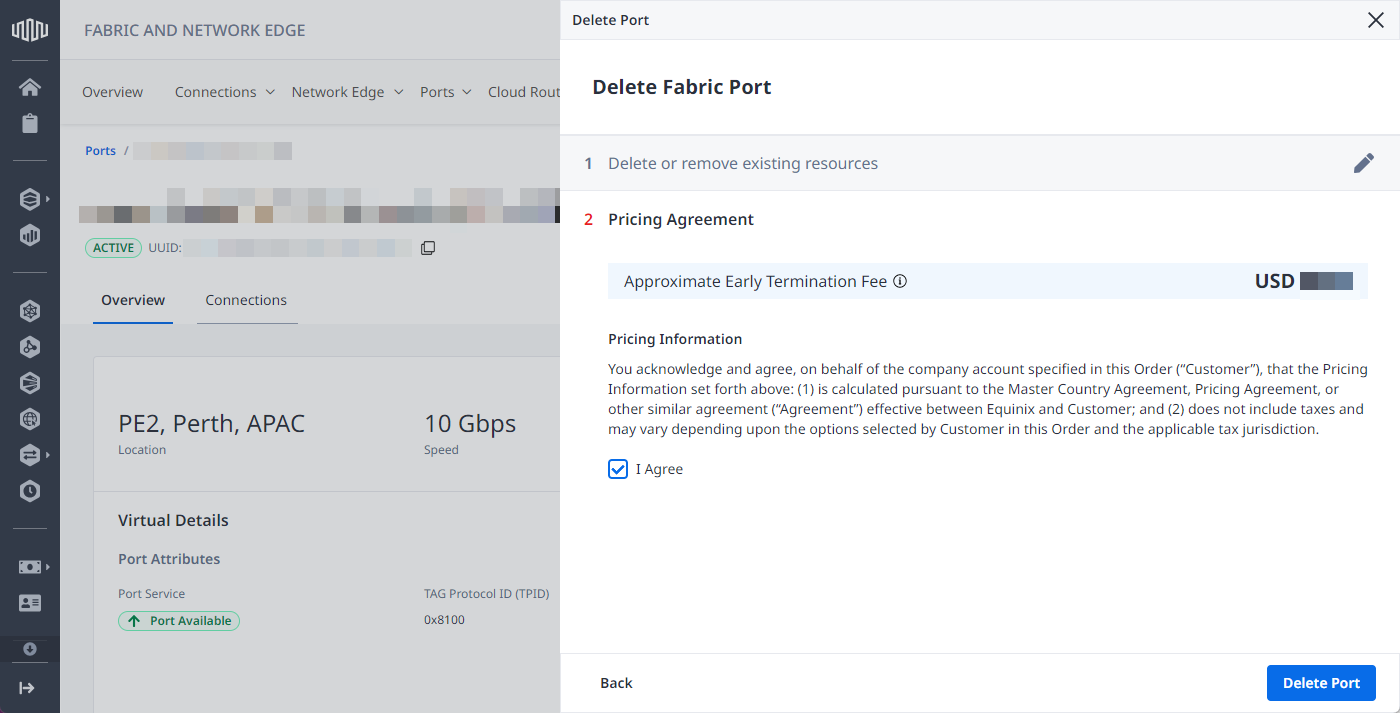Managing Your Fabric Ports
Prerequisites
-
Fabric Port Edit permissions are required to perform these operations. To obtain permissions, contact your organization’s primary administrator for access.
-
Updating a port requires deleting or migrating the connections associated with the port.
Update Encapsulation Frame Type and Tag Protocol ID (TPID)
Update an Equinix Fabric port attributes Encapsulation Frame Type and Tag Protocol Id (TPID).
The values supported are:
| Encapsulation Frame Type | Tag Protocol Id |
|---|---|
| 802.1Q (Dot1Q) | 0x8100 |
| 802.1ad (QinQ) | 0x8100, 0x8a88 |
| Untagged | N/A |
Updating encapsulation and TPID will result in downtime for Port.
To update the port:
-
Sign in to the Customer Portal and from the global navigation menu, click Fabric.
-
From the Ports menu, select Ports Inventory.
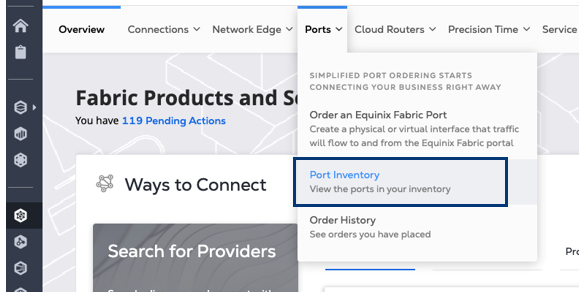
-
Locate and click the port you want to update.
-
In the Port Encapsulation field, click Edit.
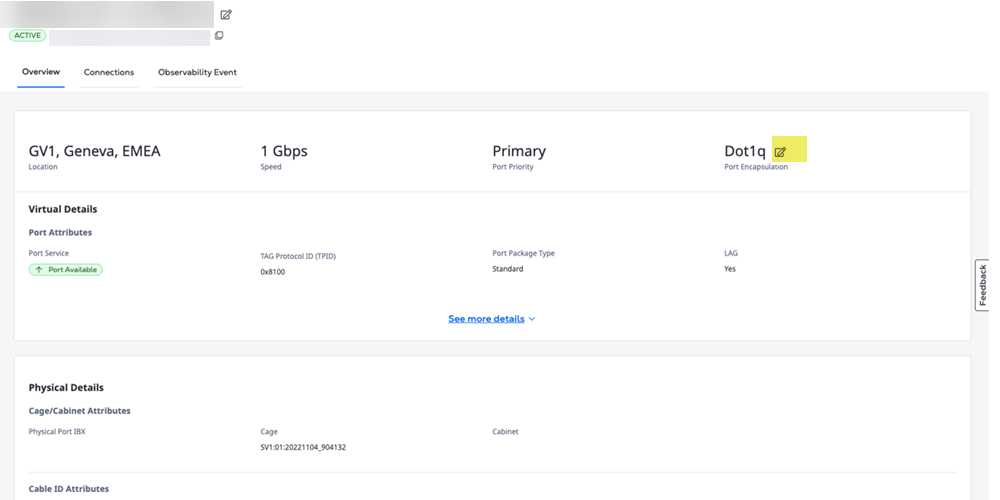
-
Select the new required value.
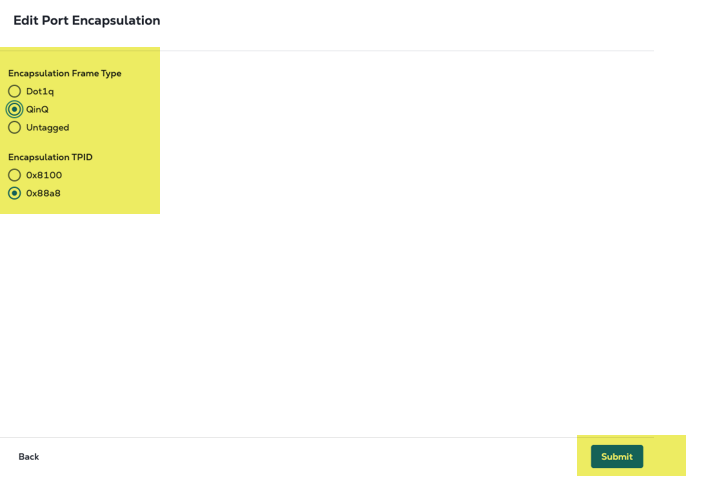
-
Click Submit.
A message displays at the top of the page indicating the port update was accepted. You will also receive a confirmation email once the port is updated.
More information is available on Encapsulation Frame Type and Tag Protocol Id (TPID) is on the Port Traffic and Tagging page.
Update the LAG Value of an Equinix Fabric Port
You can update the Link Aggregation Group (LAG) setting of an existing Fabric Port from Yes to No or No to Yes, depending on your connectivity requirements.
The Yes/No toggle is only active when the LAG has only one physical port associated with it. This update is only available when the port does not have any active virtual connections.
Update the LAG Value of a Port with No Active Virtual Connections
-
Sign in to the Customer Portal and from the global navigation menu, click Fabric.
-
From the Ports menu, select Ports Inventory.

-
Locate and click the port you want to update.
-
In the LAG field, click Edit.
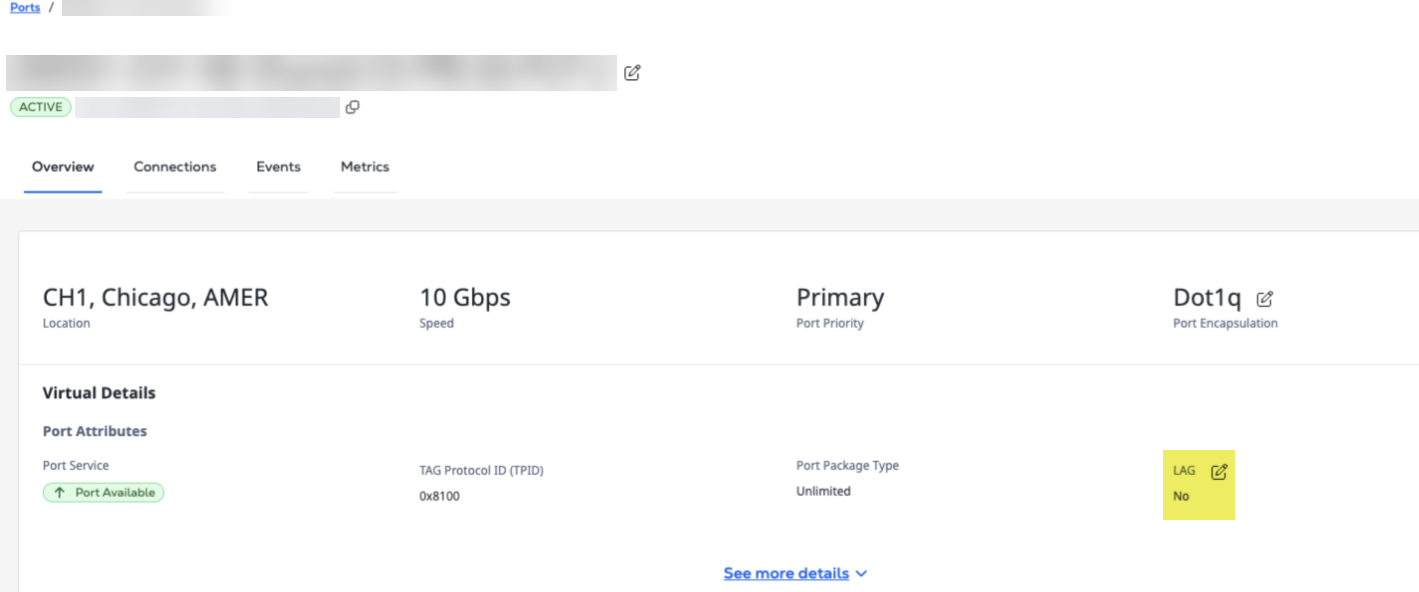
-
Select the new required value.
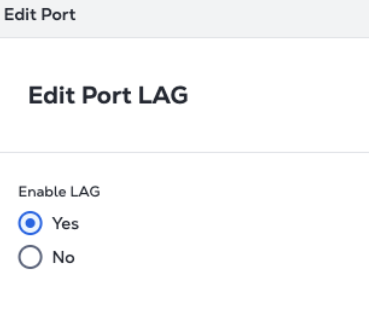
-
Click Submit.
A message displays at the top of the page indicating the port update was accepted. You will also receive a confirmation email once the port is updated.
Update the LAG Value of a Port with Active Virtual Connections
To upgrade your existing Non-LAG port to a LAG port, you must order new Fabric port and migrate your existing connections. See Upgrade from a Non-LAG to a LAG Port for more information.
Change the Priority of an Equinix Fabric Port
After you order an Equinix Fabric port as a primary or secondary port, you might want to change its priority.
Change the Priority of a Port with No Active Virtual Connections
-
Order a new Fabric port, and assign it the correct priority (either primary or secondary).
You can place this order through either your Equinix Sales Representative or the Customer Portal.
-
Terminate your Fabric port that was assigned the incorrect priority, with help from the Equinix Sales team.
Change the Priority of a Port with Active Virtual Connections
-
Order a new Fabric port, and assign it the correct priority (either primary or secondary).
You can place this order through either your Equinix Sales Representative or the Customer Portal.
-
Open a ticket to migrate existing connections from the existing port to the new port that was ordered. Your local Service Desk can be contacted through Equinix Customer Support or by sending an email to support@equinix.com.
-
Terminate your Fabric port that was assigned the incorrect priority, with help from the Equinix Sales team.
Deleting an Equinix Fabric Port
You can delete an Equinix Fabric port after you migrate to a new port and you no longer need it, or you want to terminate a port that you no longer use. You can only delete ports purchased directly from Equinix.
Deleting a port may incur an early termination fee.
Deprovisioning a port requires:
-
Removing the port from service profiles or deleting service profiles associated with it.
-
Deleting any service tokens associated with the port you want to delete.
In case there are objects associated with the given port, they will be listed when you try to delete it.

To delete a Fabric port:
-
Log in to the Customer Portal > Fabric Dashboard.
-
From the Ports menu, select Port Inventory.
-
Locate and click the port instance you want to deprovision.
-
Click Actions and select Delete Port.
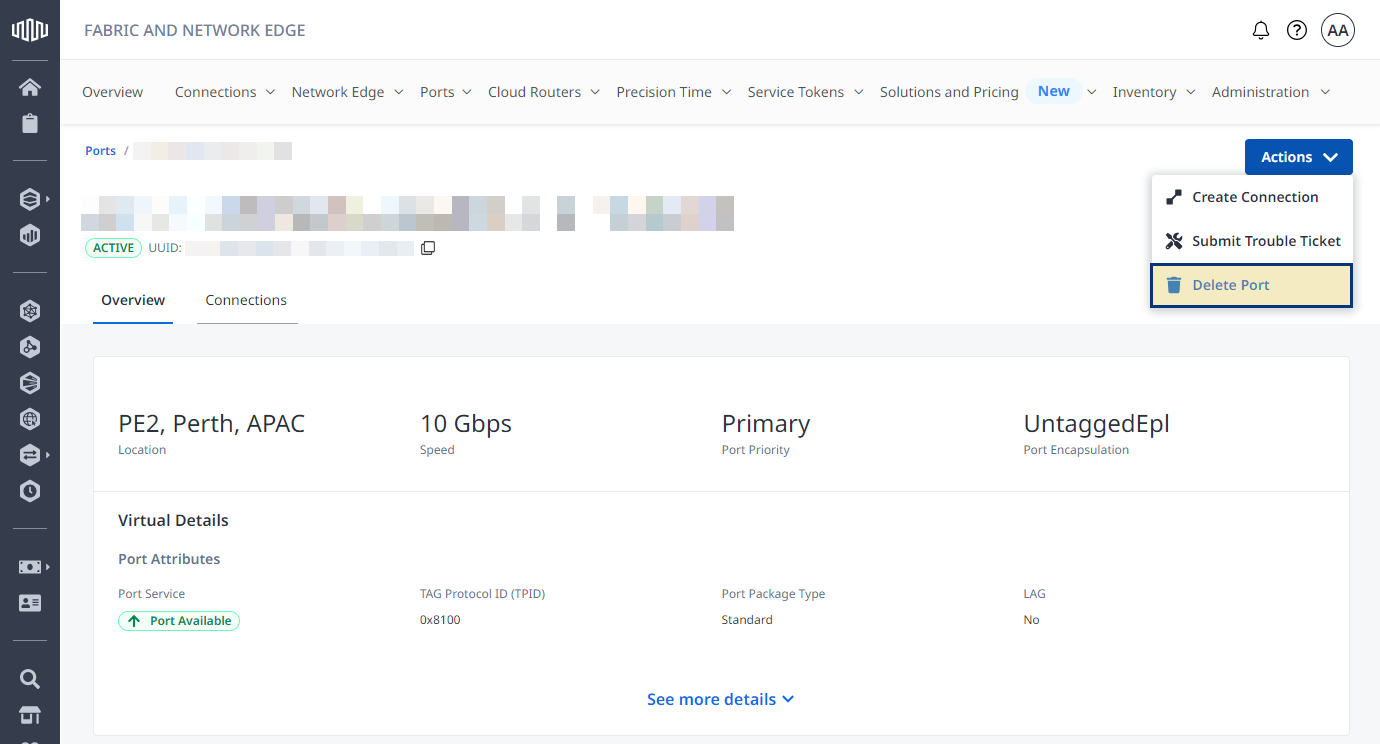
-
Make sure there are no objects associated with the given port and click Next.
-
Select I Agree to acknowledge pricing information, then click Delete Port.
